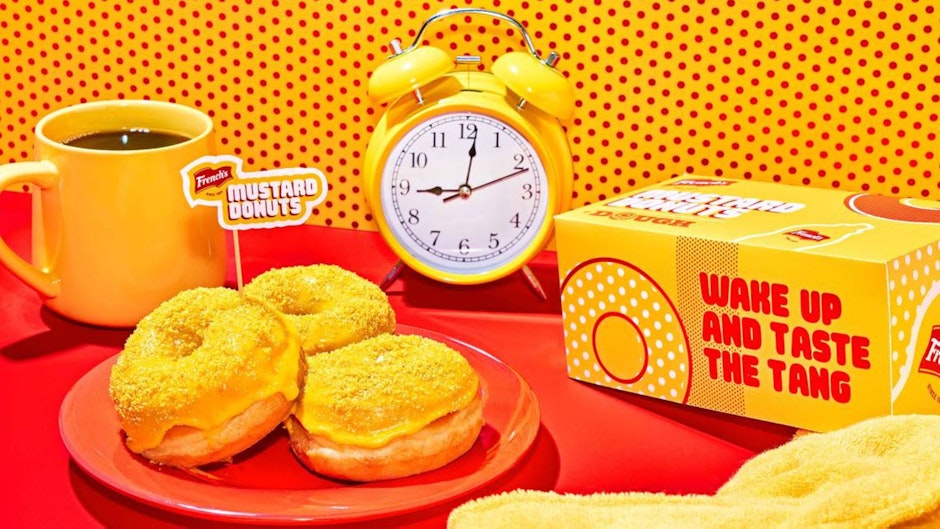Food & beverage: How brands can fight waning Gen-Z loyalty with unexpected collaborations
By Allison Ames, president & CEO, Beanstalk

There’s been a lot of talk over the past few years about younger generations and their mercurial brand loyalty. Research has shown that Gen Z, on the whole, is less “loyal” to brands than Millennials and Gen Xers. Over the same period, we’ve experienced a global pandemic and seismic disruptions in shopping and buying habits, supply chain issues, and now inflation and a possible recession.
So, what does this mean for food and beverage brands? How can they effectively fight to stay top-of-mind for consumers – especially Gen Z, who has $360bn in disposable income, according to a Bloomberg report from last year – in the face of waning brand loyalty, massive disruptions and the most competitive landscape since, well, ever?
With one relatively simple reinvigorating idea: creative, unexpected and exciting brand collaborations.
‘Halo’ heightens brand love
It’s all about the ‘halo’ effect. Think 7-Eleven Slurpee sneakers by Jake Danklefs, Kool-Aid skateboard and apparel collection by street and skateboard brand DGK, and Pumpkin Spice Grahams by Dunkin’ and Goldfish.
These kinds of out-of-the-box food and beverage brand collaborations – the ones that really get people talking – provide a number of benefits to brands. But, most importantly, they get and keep the attention of Gen Zers, who are always looking for the next big trendy movement to be part of.
This is especially significant for heritage brands, many of which traditionally haven’t done much outside of their core product line. These older brands have a comfort and trust factor, and we’ve seen a huge trend coming out of the pandemic where consumers are reaching back to “retro” brands. So now, many of these traditional brands are seeing the benefits of partnering with ultra-modern brands to entice consumers with new products and get the social conversations going.
Smart heritage brands are already beginning to see that this is where the market’s going. They understand this cultural tension and that they need to engage consumers in new and innovative ways. Many have begun to engage in different types of competitive matchups. You wouldn’t have seen some of these competitors working together even just five or six years ago.
Just a few cool and surprising examples of older brands teaming up with modern ones include Oscar Mayer and Popbar with the Cold Dog, a hot dog-flavored frozen treat; French’s and Brooklyn-based Dough Doughnuts with the Mustard Donut for National Mustard Day; and evian and direct-to-consumer (DTC) fashion company Rothy’s teaming up for an apparel collection made with repurposed evian water bottles.
All about that buzz
The best collabs – and this is key – create a storm of social media conversation. They’re buzzworthy. People talk about them, share photos and engage with the brands directly on social, raising awareness and interest among their peers.
In fact, that’s the real metric of a successful food mashup. It doesn’t matter if it “works” or if it sells well (most collabs have limited production runs). It only matters that it creates and fosters impressions and social media conversations. Buzz feeds increased market share and sales of core products. The next time a consumer goes to the grocery store after hearing about the Mustard Donut, maybe they’ll pick up a bottle of French’s Yellow Mustard.
Opening new doors and new aisles
This brings us to another important point – collabs are a marketing tool and should be treated as such. Brands can utilize either a licensing or marketing partnership model with other brands to create a surprising collab. Or they can simply do a marketing trade-out, where both brands are sharing marketing dollars. Regardless of the means, these partnerships can open up so many new avenues for food and beverage brands.
For one, collabs can bring food and beverage into new distribution channels, most notably e-commerce and DTC. TRUFF – a luxury truffle-infused condiment company – together with Hidden Valley Ranch have introduced a line of sauces exclusively on TRUFF’s website (which also brings Hidden Valley Ranch into the high-end foodie space). 7-Eleven and sports platform Overtime created a capsule collection curated by Easy Otabor available on Overtime’s website. And some of the collabs mentioned previously are only available online – like the Dive Bars by Miller High Life and Popbar. Online means limited availability, so get your products fast because you may not find it in the grocery aisle if you wait.
…And new experiences
As food and beverage brands find themselves moving more into the lifestyle space, some are focusing on fun new experiences via partnerships. Kellogg’s Frosted Flakes has partnered with Twitch to turn brand mascot Tony the Tiger into a streamer. Pabst Blue Ribbon and the Grand Traverse Motel in Michigan have launched three PBR-themed rooms. In August, Cap’n Crunch – the Quaker Oats brand cereal – offered a personalized water ferry around New York City for a limited time. Passengers were offered free coffee and Cap’n Crunch products aboard the “Cap’n’s Commute.”
The unexpected becomes the expected
Remember, these collabs are about the buzz, not the sales! It’s about realizing the power of product as marketing ammunition and differentiation. They can generate more impressions than any traditional campaign ever could. It’s harder than ever to reach younger consumers, but leveraging social media is the way to do it. What’s more, consumers are now expecting brands to do something unexpected to surprise and delight them – a bit of a new cultural phenomenon.
To stay relevant as brand loyalty wanes, smart food and beverage brands should foster innovation and excitement by creating unexpected but expected partnerships. The bottom line is this: Food meeting food and food meeting fashion in unexpected ways is here to stay. There is no limit to the creation of unique mash-ups that provide surprise, excitement and delight to consumers.

